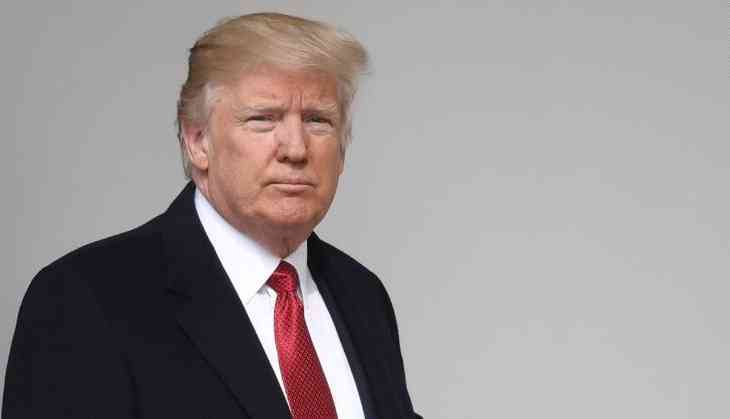Trump challenges India's subsidies: How should we respond?

Donald Trump has a clear policy. He claims he will not spare anyone in his quest to make America great, again. We can debate over the effectiveness of his policy measures, depending upon our political and economic affiliations, but that won't change the reality on ground.
Therefore, Trump administration's decision to launch a trade challenge to most of India’s export subsidy programs at the World Trade Organisation, should not surprise us.
"These export subsidy programs harm American workers by creating an uneven playing field on which they must compete," U.S. Trade Representative Robert Lighthizer said in a media statement.
There could be two ways India can respond to the situation. We can either opt for the traditional route to fight out our right to subsidise exports at WTO's dispute settlement panel. Or we can use this opportunity to realise that the subsidies will not be there forever and our industries need to be effective and innovative to the extent that they create a niche for themselves.
If we go for the first route, we would at most be able to buy out some more time to conduct our business in the traditional way for a few more years.
As is clear from the perspective of SC Ralhan, a hand tool exporter from Ludhiana who was also president of the Federation of Indian Exporters Organisation, “ Indian government is not giving any direct subsidies. We have a ground to fight our case and the government is preparing its strategy to fight the case.”
Can we win the case?
A lot of schemes incentives that India offers to promote its exports fall are allowed to only for countries with per capita income of $1000. Another criteria, especially in the textiles sector, allows subsidies only till a company reaches the scale of 3.25% of world trade.
In the textiles sector, India touched the threshold of 3.25% share in world trade in 2008. The WTO allows 8 years time period to faze out subsidies and, therefore, the government would want to avoid using the 3.25% criteria. Rather, it would want to focus on the $1000 threshold the Indian crossed only in 2015 and was reported at the WTO in 2017.
So, in case, the government plays smart and manages to seek some respite from the WTO dispute settlement panel, the country may be allowed a few more years to give subsidies based on which year ( 2015 or 2017) is settled upon for reaching recognising India's entry into the $1000 per capita income country.
DK Nair, former secretary general of Confederation of Indian Textiles Industry says “ Not all of our schemes are of the nature of subsidies. For example the Technology Upgradation Fund Scheme (TUFS) is given to all industries and not just export oriented. There are many other schemes that could benefit Indian exporters and will not be difficult to defend at the WTO platform.”
The other option
Even if India manages to buy some more time for its exporters, the technicalities of the WTO rules suggest that there is no infinite time available for the Indian exporters. India as a country has failed to improve its export infrastructure over the years and this is why smaller countries like Bangaldesh and Vietnam have forged ahead of India in many areas.
One of the reasons for India's slow progress exports sector is its inability to promote large manufacturing units. The average size of an Indian manufacturing units is less around 70 employees. Whereas in China, Bangladesh and Vietnam it is around 500. This makes it difficult for Indian exporters to achieve the economies of scale and offer competitive pricing t buyers.
Apart from this, Indian exporters have failed to adopt the responsible business practices like better facilities for labourers, environment friendly raw material etc, which makes many of the top notch western companies to reject Indian manufacturing units.
In a recently held conference by India Responsible Business Forum, Rishi Sher Singh, a supply chain expert said “ that the Western companies are becoming conscious of who the source their material from. What are their labour polices and how responsible they are towards their employees. Indian companies will have to recognise the changing global scenario and upgrade their production facilities.”
Apart from adopting responsible business practices, Indian exporters also need rationalisation of many labour laws – not necessarily the hire and fire policy- that allows companies to expand their businesses. While the government often talks about labour reforms in conferences, unfortunately, its understanding of it has remained limited to allowing businesses to hire and fire workers at will, which in the absence of due procedures and best human resource practices, will create industrial relations crisis.
Rather, the government needs to do away with such laws that make it difficult for companies to upgrade machinery without the permission of labour unions. There are many other archaic rules that mar the growth of Indian exporters and there is a need for the government to re- explore its understanding of labour reforms.
Last but not least, the government must invest in research and development that allows Indian companies to move towards value addition. Though it is difficult, China after all these years of being the manufacturing hub of the world is known for low end manufacturing, but not impossible. We need to make a start somewhere, with a concsious mind that subsidy-based mechanisms can keep us alive but will never allow us to thrive.
First published: 20 March 2018, 23:24 IST

